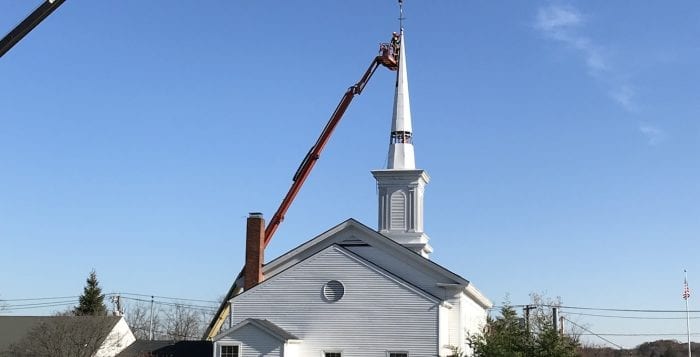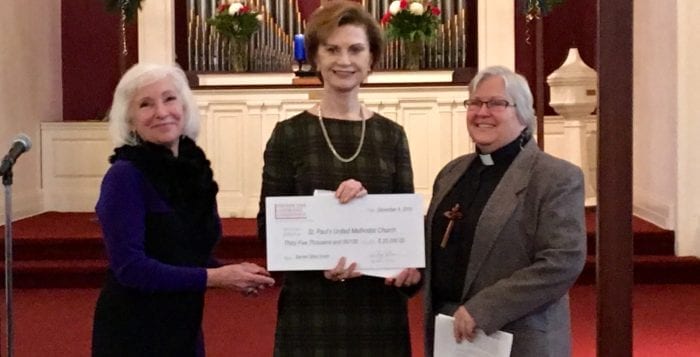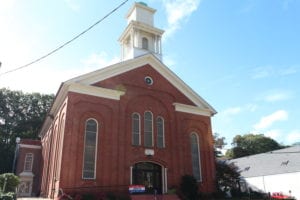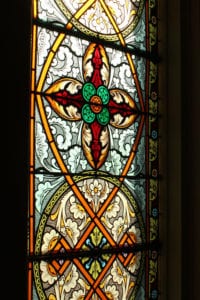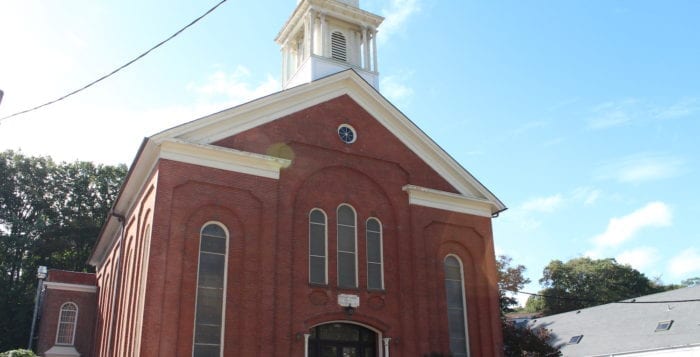By Beverly C. Tyler
Setauket United Methodist Church at the corner of Main Street and Route 25A sits as a beacon and a guide to the historic community around it known as Chicken Hill. This is a place that had its roots in mid-19th century industrial America with first the Nunns & Clark piano factory and its primarily German workforce, followed in the same five-story brick factory by the Long Island Rubber Company which initially hired Irish and African American workers. Later Russian Jews and Eastern European Catholic immigrants flooding into New York City were hired for a workforce that, at its peak, totaled more than 500.
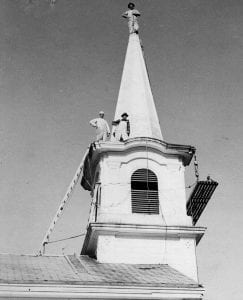
Three Village Historical Society president, Steve Healy, said he was approached by the church’s pastor, the Rev. Steven Kim, who knew about the society’s exhibit, Chicken Hill: A Community Lost to Time. Kim asked if the society would be interested in the church’s steeple as it was to be taken down and replaced by a new one.
“I thought it would be nice to include a portion of the steeple, with the cross on top, in the exhibit, to show that this church was a focal point of Chicken Hill, right in the middle of these working-class immigrants,” Healy said.
The steeple, weighing about 700 pounds, consisted of the aluminum skin and the interior framing. The exterior skin was separated from the inside structure and moved by trailer to the historical society’s headquarters on North Country Road.
“We decided to take all 32 feet and later decide what will be used in the exhibit,” Healy said. “It’s a historical artifact that people can touch and a fascinating addition to our exhibit in the history center.”
One of the goals of the historical society is to bring the history of the local community to life and to excite and engage people. The society also wants visitors to its exhibits to discover what they want to remember and what they need to remember. The artifacts and documents in the Chicken Hill exhibit illustrate the cooperative community that existed at Chicken Hill as well as the societal problems that existed in and around that area. Bringing people of diverse ethnicity, race and religion here to live and work together provides a wealth of stories.
The Chicken Hill exhibit tells the stories of harmony and conflict together with individual stories of pride, compassion and humor. The addition of the church steeple will help to bring the storytelling full circle.
Beverly C. Tyler is Three Village Historical Society historian and author of books available from the society at 93 North Country Road, Setauket. For more information, call 631-751-3730 or visit www.tvhs.org.

